Exhibitions
We are delighted to welcome guests into our new 20,000-square-foot Exhibition Hall! Featuring six unique, thematic exhibits inspired by watercraft from around the country and the world, this one-of-a-kind experience is made possible by the contributions of people from all backgrounds, coast to coast to coast.
Through a variety of engaging and inspiring means, these exhibits honour Indigenous knowledges, cultures, histories and ingenuity; share the diverse stories of people connected to the watercraft in the collection; provide a testament to the many different ways of building canoes, kayaks, and other watercraft; facilitate hands-on learning and celebrate the role of watercraft as a path to inspiration, self-discovery and well-being.
Interactive displays and multi-media elements will allow visitors to connect with the collection, builders, and storytellers through stories, demonstrations, reflections, and play!
Headwaters
Where the journey begins
Imagine standing at the headwaters of a river, where it begins its journey outward to join other waters and eventually reach a distant ocean. Just as a river branches and braids, our life’s stories also distinguish us and draw us together. The amazing variety of canoes and kayaks around you are statements of our complex relationships with the environment. These little boats don’t just tie us together; they reveal differences in our connection to our waters. The Canadian Canoe Museum cares for a wonderfully diverse family of watercraft, and by tracing their routes and stories, canoes guide us worldwide.
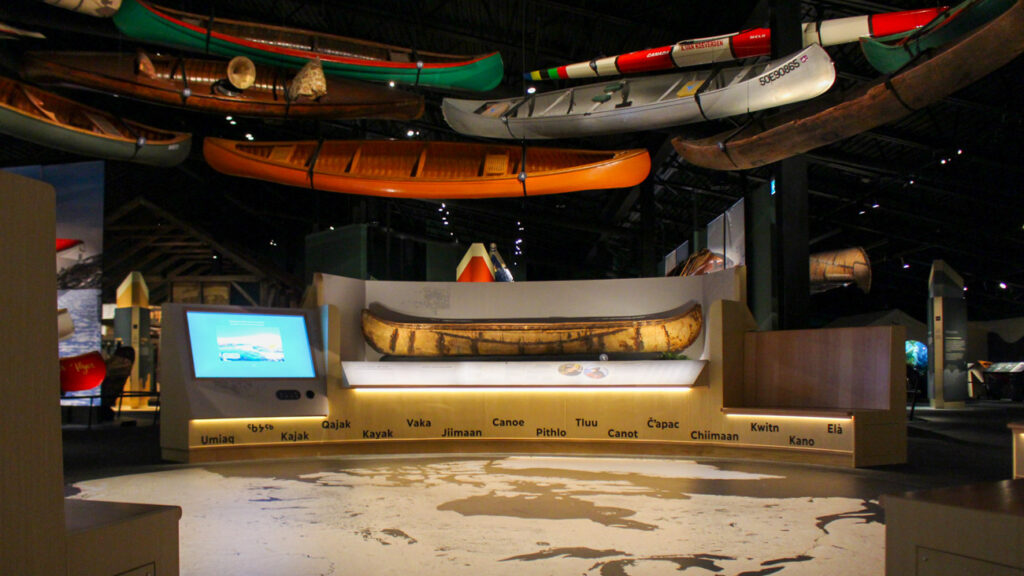
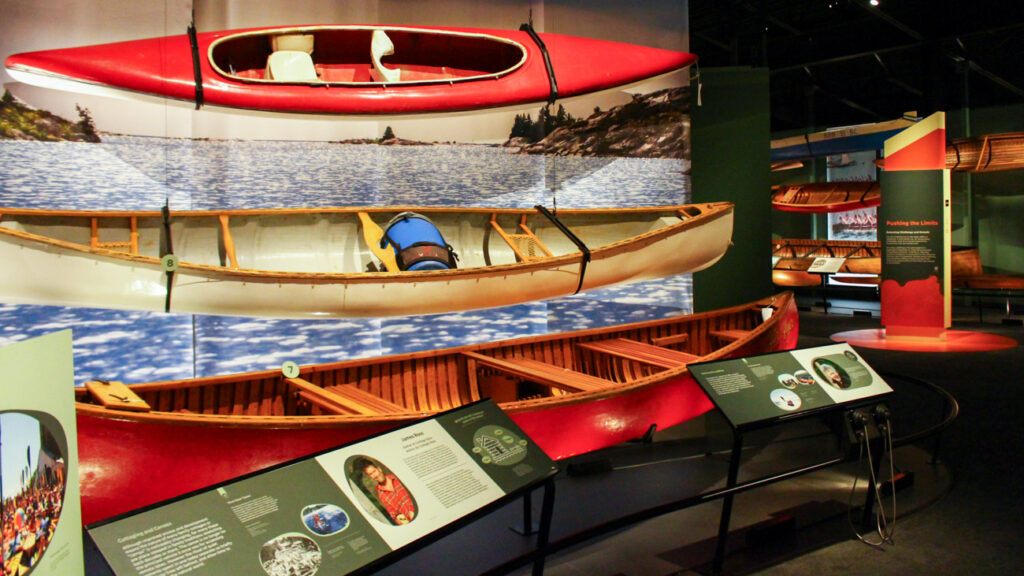
All My Relations
Communities of the canoe
Meet the extended family of the canoe. The ancestry of today’s kayaks and canoes trace to Indigenous origins, and have woven intricate threads within communities and across generations around the world.
They continue to be powerfully relevant today, reminding us that we are intrinsically connected to the natural world and all the beings within. Explore the wide family tree of paddling cultures and communities, both ancient and new, that are inseparable from the natural environment.
Connected By Canoe
Changing relationships through the lens of the canoe
The canoe has been used around the globe for thousands of years to establish relationships between people of diverse backgrounds. Across this continent, established and ancient trade routes followed key waterways, making the canoe an ideal means of travel. These pathways have left a lasting impression that is recognizable on the landscape of Canada today, as many trading hubs and meeting places are now familiar cities. The legacy of these complex and changing relations continues to impact us today. Yet, the canoe continues to be present, often used to navigate a pathway toward healing.
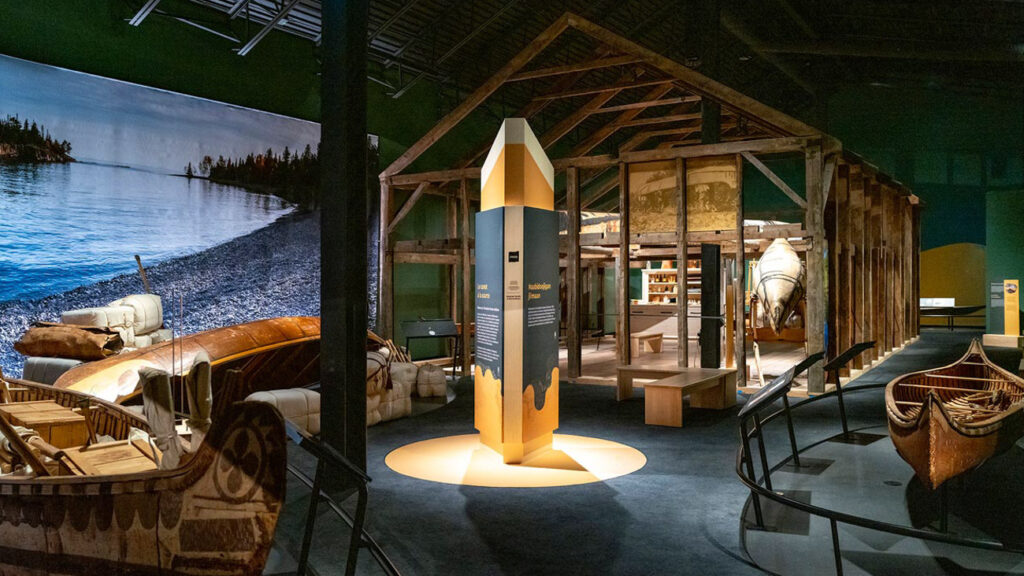
Credit: Eden Photography
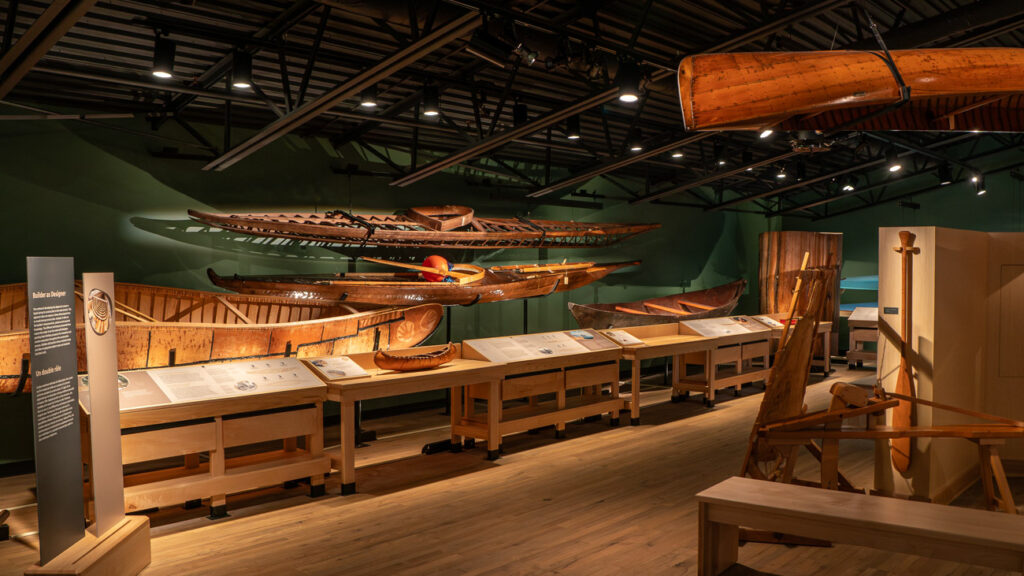
Credit: Justen Soule
Living Traditions
Design, ingenuity and the maker
Welcome to a workshop like no other. There is a simple elegance to the shape of the little boats around us that is deceptive. If we look closely and listen, we discover many amazing layers that are carried within these complex watercraft.
These are not static objects made to be still. Each has been shaped with the intended role it will serve as it travels through the water. They also reflect the method, knowledge of materials, innovations and influences that each maker brings to their work. Discover the brilliant engineering and craftsmanship of the canoe and kayak.
Pushing the Limits
Understanding risk and discovering our potential
The act of setting out on the water offers us adventure. It also carries risk. By facing these challenges, each of us has the opportunity to grow and even be transformed.
For some, paddling is the participation in organized competition or undertaking journeys of significant distance. In doing so, they face personal limitations or constraints in the chance to discover their full potential. Explore these inspiring and sometimes difficult stories, and learn how embracing opportunities on the water can reshape us and society.
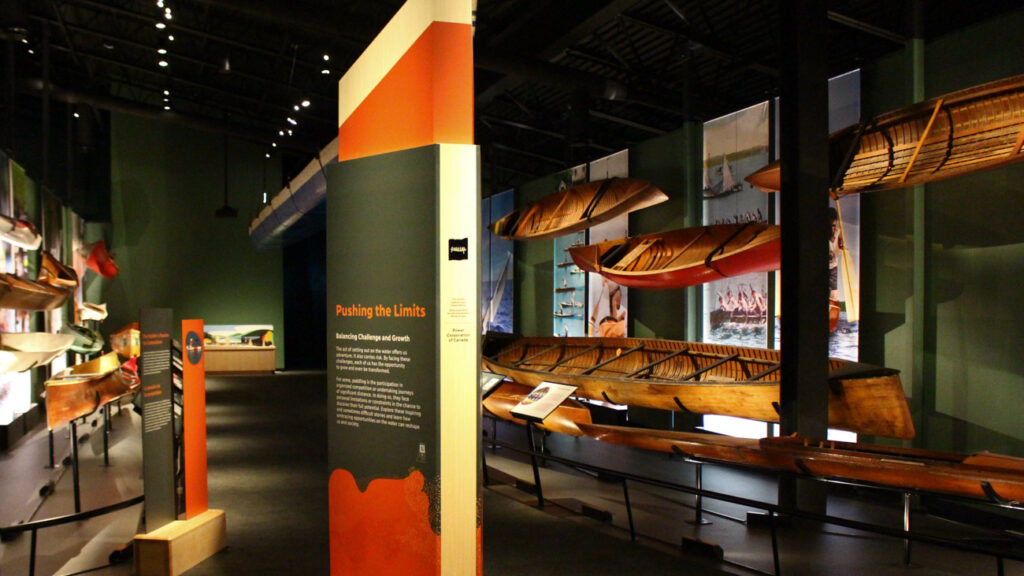
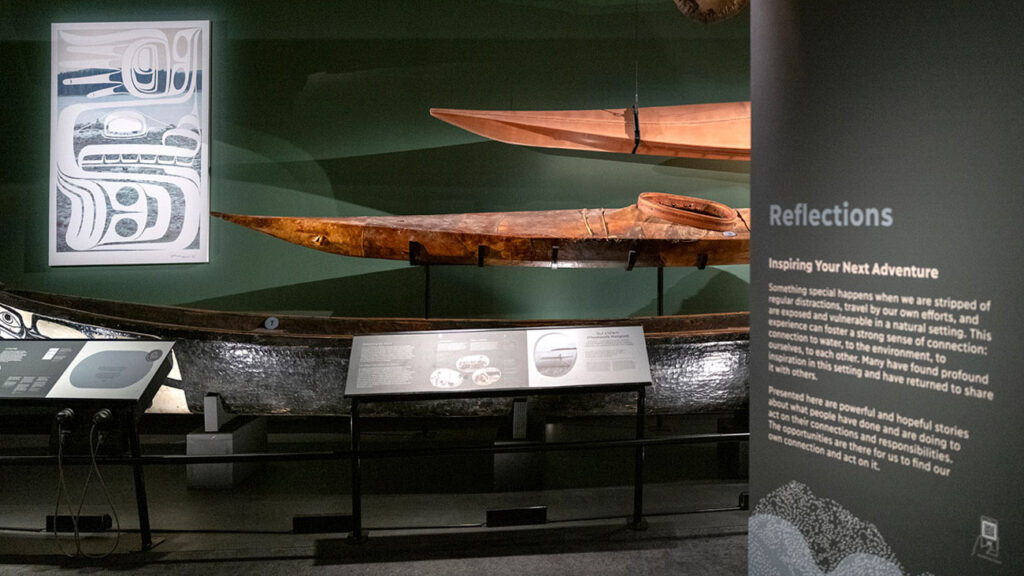
Credit: Eden Photography
Reflections
Inspiring your own connection
Something special happens when we are stripped of regular distractions, travel by our own efforts, and are exposed and vulnerable in a natural setting. This experience can foster a strong sense of connection: connection to water, to the environment, to ourselves, to each other. Many have found profound inspiration in this setting, and have returned to share it with others. Presented here are powerful and hopeful stories about what people have done and are doing to act on their connections and responsibilities. The opportunities are there for us to find our own connection and act on it.
Dive Deeper with an Exhibition Tour
Embark on a captivating journey through The Canadian Canoe Museum’s galleries with our immersive Deep Dive Exhibition Tours! Led by expert docents, explore six thematic exhibits, uncover hidden gems, and discover the incredible stories and people behind the more than 100 watercraft on display!
Add a tour to your admission ticketAn Algonquin birch bark canoe built by William and Mary Commanda of Kitigan Zibi, Quebec. (Photo Credit: Michael Cullen)
Exhibit Development
Approach to Language
Our voices and our stories are inherently intertwined with language. As such, the Museum honours Indigenous languages, English, and French in these exhibits. We offer the principal texts in both official languages and the local dialect of Anishnaabemowin, reflecting the Museum’s location within Michi Saagiig and Williams Treaties territory. These exhibits also feature an incredible diversity of watercraft and traditions from across the continent and around the world, and we have sought contributions from speakers of other Indigenous languages.
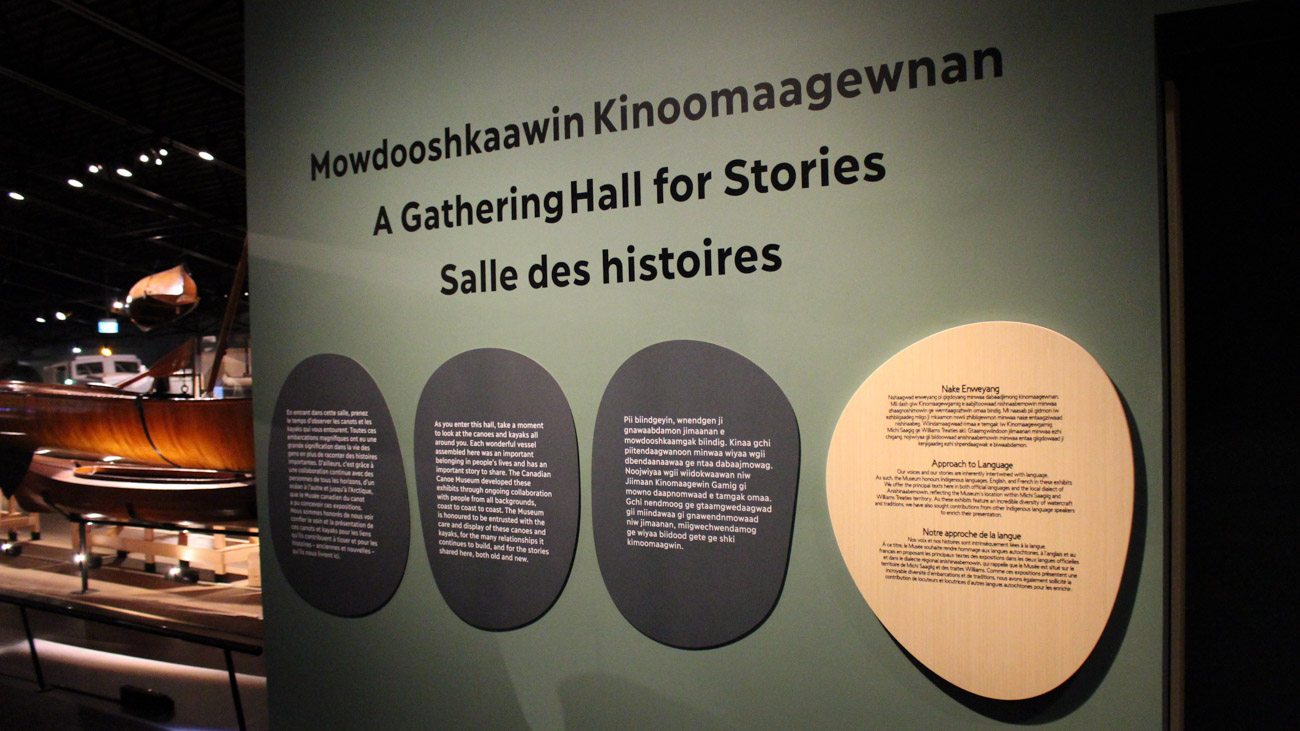
Miigwech, Thank You, Merci
The Indigenous Languages Program is supported by TD Bank Group through the TD Ready Commitment.
The development and installation of the exhibits are funded in part by the Government of Canada through the Federal Economic Development Agency for Southern Ontario.
Le développement et l’installation des expositions sont financés en partie par le gouvernement du Canada par l’intermédiaire de l’Agence fédérale de développement économique pour le sud de l’Ontario.








